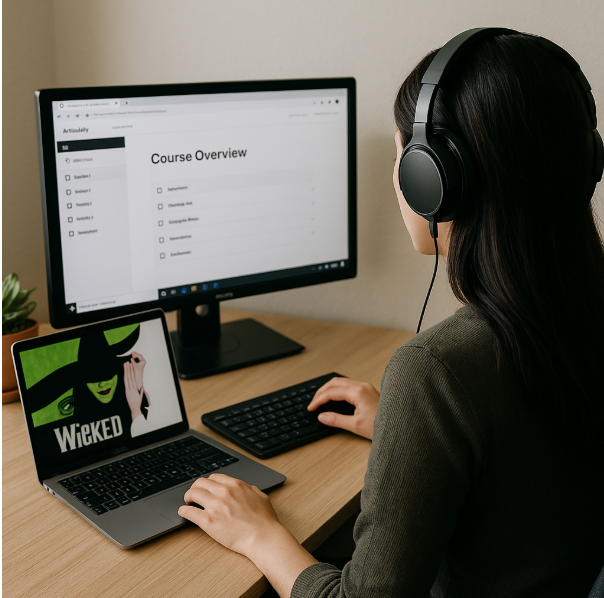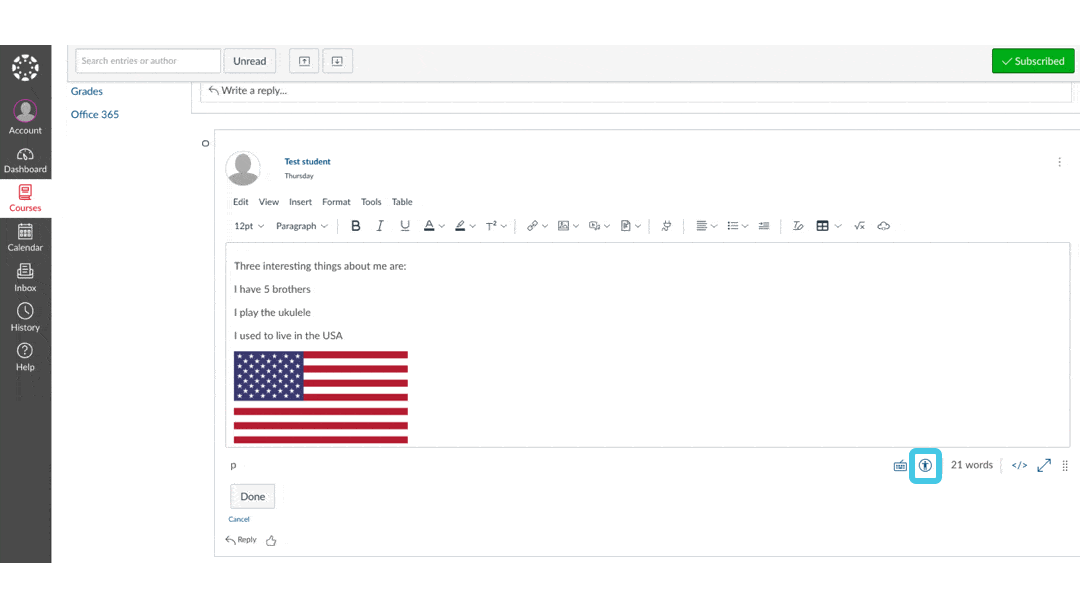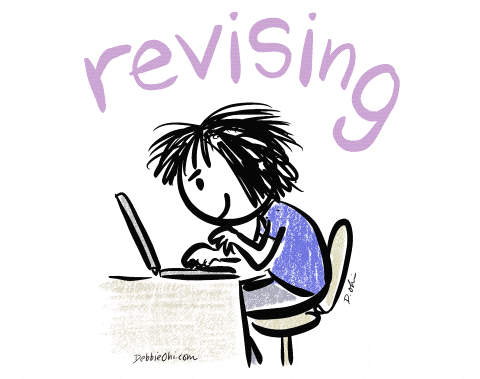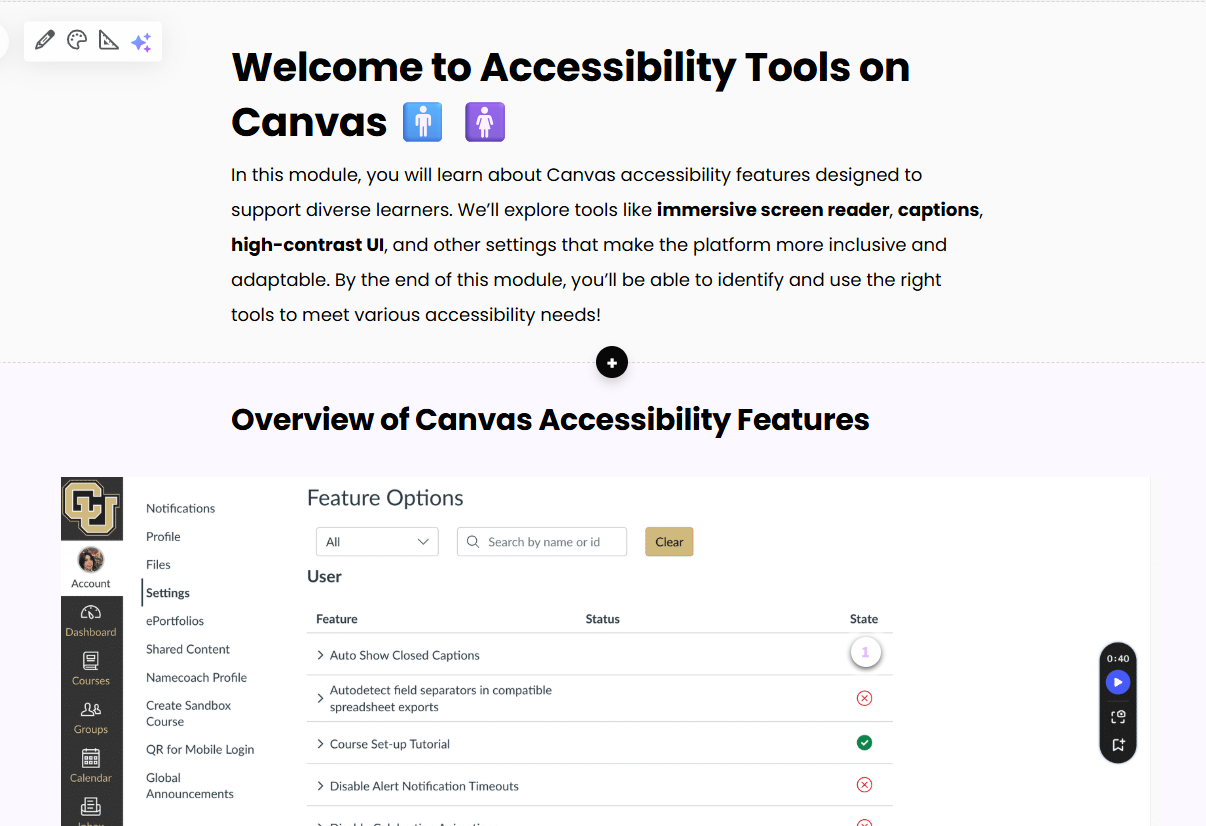How to Freak Out, Figure It Out, and Build a Curriculum about Canvas (sparkle)
The Client:
My client for this project was CU Denver. The mission? Create an interactive Canvas Navigation Curriculum to help new students (freshmen, transfers, international students, etc.) feel confident and capable in using their learning management system, Canvas.
What Happened:
When I first took on this project, I was equal parts excited and freaking out. I had no idea what I didn’t know. My first challenge? Propose the project and have actual ideas and content involved - something that should have taken maybe an hour or two tops. Instead, I spent seven hours on a Canva presentation that Friday night, belting out the Wicked soundtrack (because nothing says motivation like “Defying Gravity” at full volume amiright?).
But that nervous energy turned into…something. Over the course of the semester, I spent 30+ hours designing a 10-module digital course in Articulate Rise. I created a (hopefully) easy-to-follow, streamlined, and accessible curriculum for students learning Canvas. Whether they’re brand new, transferring in, or just feeling plain overwhelmed!

The Plan:
I aimed to make the curriculum feel approachable and helpful, not like another overwhelming task on their to-do list. Here's what I included:
- Intro to Canvas at CU Denver
- Getting Started with Canvas Navigation
- Customizing Your Canvas Profile
- Accessibility Tools on Canvas (my favorite module!:)
- Canvas Basics: Modules, Assignments, and Grades
- Universal Design for Learning (UDL) Principles on Canvas
- Student Resources and Recommendations
- Canvas Mobile App vs Desktop Navigation
- Using Canvas for Communication
- Canvas Tips: Best Practices and Maintenance
- Course Summary: Includes an overview video, final tips, and key takeaways.
- Optional Knowledge Check: 3 Canvas scenarios and reflection questions.
- Feedback Loop: Google surveys at the end of Modules 2–10 to gather student opinions for future improvements.
The Process: Freak-Outs, Discoveries, and a Whole Lotta Revisions
I started this project feeling a little [a lot] overwhelmed, but quickly learned that building a curriculum from scratch requires three big things:
- A clear plan (this only took like, idk like 10 messy drafts).
- Patience for revisions (and acceptance perfection is apparently an ongoing- maybe even never-ending process.)
- The ability to laugh at yourself when you get stuck - like the time I spent almost two hours debating internally on if "High Contrast Mode" needed its own block. (Spoiler: It did indeed.)

Accessibility Was a Game-Changer!
One of my proudest accomplishments in this project was making accessibility tools a focus. I spent extra time:
- Highlighting the Immersive Reader for text-to-speech and visual customizations.
- Including alternative formats for PDFs, like audio and Braille options.
- Creating content that students could customize for their learning needs.
As someone new to instructional design, this taught me that good design helps everyone, not just those who specifically need accessibility tools. And, not to brag, but I too now know how to sparkle up my own Canvas settings or listen to a reading while I’m driving (legitimately didn’t even know it could do that!)
Reveling in Revision
If this project taught me anything, it’s that revision is where the magic happens. The course evolved with every tweak, every suggestion, and every "Oh, THAT makes way more sense" moments. I had to balance creativity, practicality, and the needs of the students, who I kept at the center of every design decision.

What I Learned:
- Revision is not failure. It’s a chance to make something better and improve your learning experiences!
- Keep it simple: The first version of my modules were very info heavy and I forgot that most people are not psyched to read entire paragraphs about account settings (oops). Streamlining made it more effective.
- Sing loudly when you’re stuck. Seriously, I swear sometimes, you just need a good motivational sing-along (never said it had to be pleasing to the ear).
The Outcome:
By the end of the semester, I had a polished, accessible course that I was genuinely proud of. New CU Denver students now have a step-by-step guide to Canvas, designed to make their first semester easier, not harder!
And those Google surveys? They’ll ensure the course only gets better with time. If the students actually bother to fill them out….
Final Reflections: From “What Am I Doing?” to “I Can Do This” (probably)
When I started this project, I had no idea what I was capable of. I was worried I didn’t know enough about instructional design, platforms like Rise, or even Canvas itself. But by the end, I realized:
- I actually can figure it out.
- I really enjoy this field.
- And creating something useful for students feels pretty incredible.
This project pushed me out of my comfort zone in the best way. I not only built a curriculum - I built confidence in myself as a learning designer :)
The Conclusion:
You start with big ideas, revise (and revise again and again and again, and well, you get it), and remember to always keep the learners at the center. It’s messy at times, but the end result is definitely worth it.
Now, I can’t wait to see students using what I built. And who knows? Maybe next time I’ll spend only four hours on my Canva presentation [wink].




Member discussion